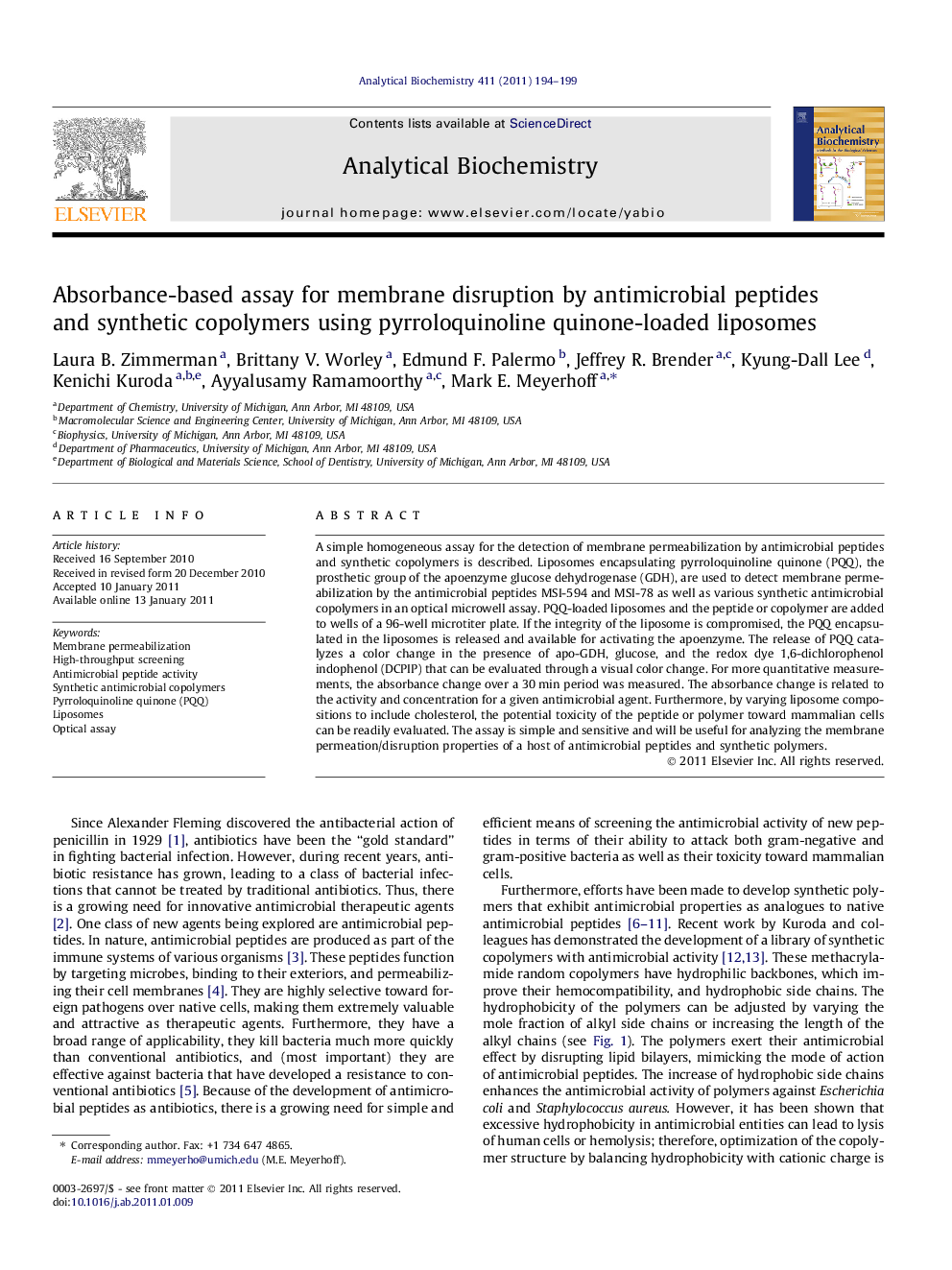| Article ID | Journal | Published Year | Pages | File Type |
|---|---|---|---|---|
| 10532669 | Analytical Biochemistry | 2011 | 6 Pages |
Abstract
A simple homogeneous assay for the detection of membrane permeabilization by antimicrobial peptides and synthetic copolymers is described. Liposomes encapsulating pyrroloquinoline quinone (PQQ), the prosthetic group of the apoenzyme glucose dehydrogenase (GDH), are used to detect membrane permeabilization by the antimicrobial peptides MSI-594 and MSI-78 as well as various synthetic antimicrobial copolymers in an optical microwell assay. PQQ-loaded liposomes and the peptide or copolymer are added to wells of a 96-well microtiter plate. If the integrity of the liposome is compromised, the PQQ encapsulated in the liposomes is released and available for activating the apoenzyme. The release of PQQ catalyzes a color change in the presence of apo-GDH, glucose, and the redox dye 1,6-dichlorophenol indophenol (DCPIP) that can be evaluated through a visual color change. For more quantitative measurements, the absorbance change over a 30Â min period was measured. The absorbance change is related to the activity and concentration for a given antimicrobial agent. Furthermore, by varying liposome compositions to include cholesterol, the potential toxicity of the peptide or polymer toward mammalian cells can be readily evaluated. The assay is simple and sensitive and will be useful for analyzing the membrane permeation/disruption properties of a host of antimicrobial peptides and synthetic polymers.
Keywords
Related Topics
Physical Sciences and Engineering
Chemistry
Analytical Chemistry
Authors
Laura B. Zimmerman, Brittany V. Worley, Edmund F. Palermo, Jeffrey R. Brender, Kyung-Dall Lee, Kenichi Kuroda, Ayyalusamy Ramamoorthy, Mark E. Meyerhoff,
